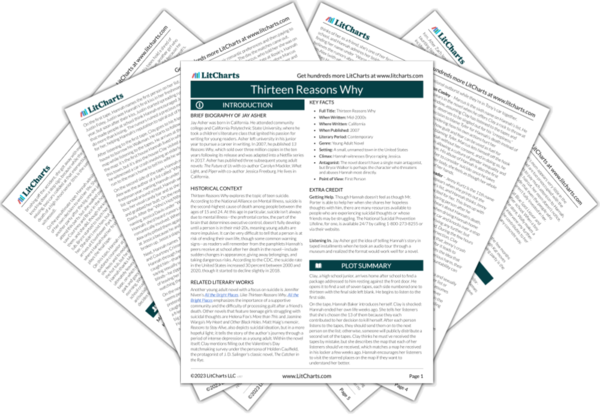Even when Hannah thinks she’s doing something helpful, she doesn’t know the whole story. She believes that she’s calling to report the broken sign, but the truth is, there’s already been a fatal crash at that intersection. Events spiraled out of Hannah’s control so quickly, she wasn’t even aware of them. As Hannah walked to the party earlier that night, she felt hopeful in the warm weather; now, the weather comforts her in a different way by letting her imagine fading into it. This is a major turning point in Hannah’s story: it’s the point at which she seems to decisively realize that she no longer wants to be a part of the world.
